Jingszo !
 phys.org
phys.org
Given the numerous proposed forms of dark matter, scientists are investigating multiple approaches for their detection. This study centers on understanding how ultralight dark matter behaves in relation to extreme mass ratio inspirals (EMRIs). These systems consist of a supermassive black hole (SMBH) in conjunction with a smaller astronomical body, which may be a star or another black hole. The gravitational waves emitted by these systems as the smaller stellar object spirals into the SMBH could point to the behavior of ultralight dark matter in and around these systems.
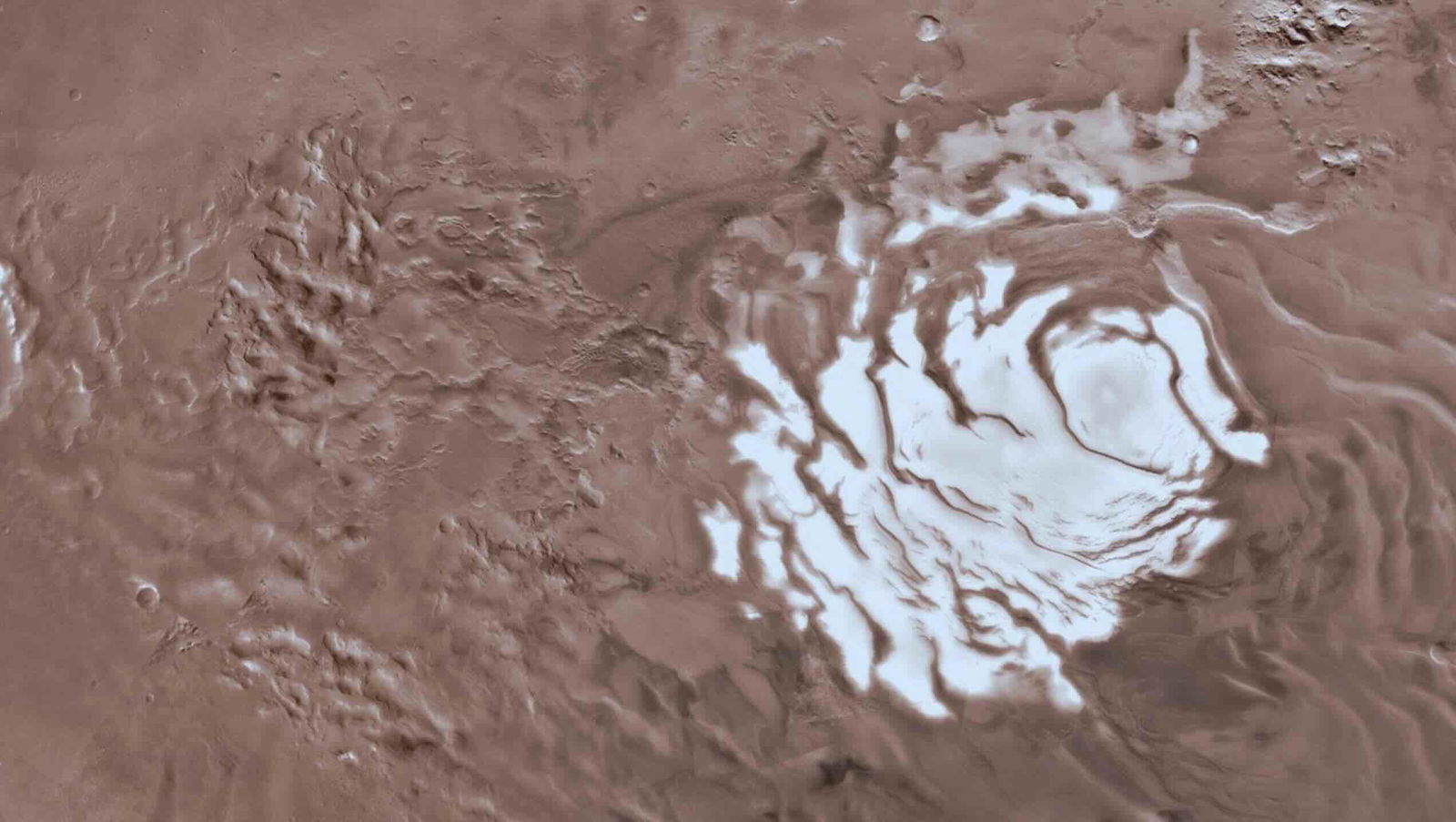 thedebrief.org
thedebrief.org
Scientists have discovered that exposed ice on Mars could create conditions suitable for photosynthesis, suggesting the possibility that microbial life could thrive there despite the planet’s harsh environment and intense ultraviolet radiation. The new findings reveal the potential for the existence of life on the Red Planet near its sub-latitudes, revealing that photosynthetic organisms may be uniquely suited for survival in certain icy exposed regions on the planet.
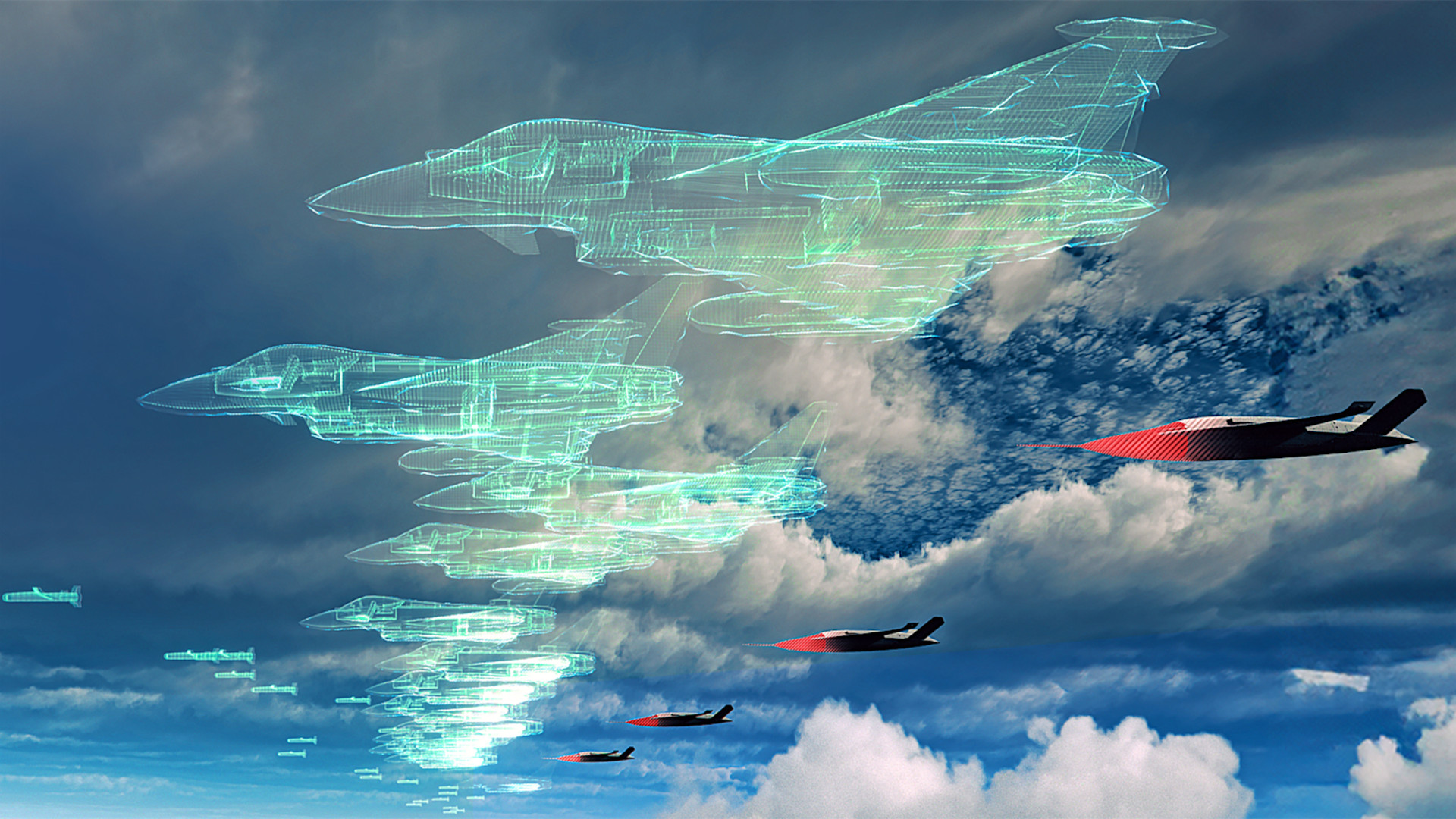 www.twz.com
www.twz.com
Like its predecessor, BriteStorm can scoop up hostile radar emissions and emulate returns to create large numbers of false and confusing ‘ghost’ tracks and can also execute more traditional jamming, with even more adaptive capabilities on the horizon.
The beetle superfamily Elateroidea comprises the most biodiverse bioluminescent insects among terrestrial light-producing animals. Recent exceptional fossils from the Mesozoic era and phylogenomic studies have provided valuable insights into the origin and evolution of bioluminescence in elateroids. The fossil possesses deeply impressed oval pits on the apices of antennomeres 3–11, representing specialized sensory organs likely involved in olfaction. The light organ near the abdominal apex of Flammarionella resembles that found in extant light-producing lucioline fireflies. The growing fossil record of lampyrids provides direct evidence that the stunning light displays of fireflies were already established by the late Mesozoic.
 www.universetoday.com
www.universetoday.com
The search for exoplanets has grown immensely in recent decades thanks to next-generation observatories and instruments. The current census is 5,766 confirmed exoplanets in 4,310 systems, with thousands more awaiting confirmation. With so many planets available for study, exoplanet studies and astrobiology are transitioning from the discovery process to characterization. Essentially, this means that astronomers are reaching the point where they can directly image exoplanets and determine the chemical composition of their atmospheres. As always, the ultimate goal is to find terrestrial (rocky) exoplanets that are “habitable,” meaning they could support life. However, our notions of habitability have been primarily focused on comparisons to modern-day Earth (i.e., “Earth-like“), which has come to be challenged in recent years. In a recent study, a team of astrobiologists considered how Earth has changed over time, giving rise to different biosignatures. Their findings could inform future exoplanet searches using next-generation telescopes like the Habitable Worlds Observatory (HWO), destined for space by the 2040s.
 gizmodo.com
gizmodo.com
A deceased man’s genitals have turned out to be a medical wonder. In a recent case report, doctors in the UK describe discovering that the man had three penises—an incredibly rare condition. Amazingly, the man may have never known about his unique anatomy, as the discovery was only made after his body was donated to science, and his external genitalia appeared perfectly normal.
A species of tropical butterfly with unusually expanded brain structures displays a fascinating mosaic pattern of neural expansion linked to a cognitive innovation. The study, published in Current Biology, investigates the neural foundations of behavioral innovation in Heliconius butterflies, the only genus known to feed on both nectar and pollen. As part of this behavior, they demonstrate a remarkable ability to learn and remember spatial information about their food sources—skills previously connected to the expansion of a brain structure called the mushroom bodies, responsible for learning and memory. **Highlights** • Heliconiini butterflies have conserved wiring logic in spheroid mushroom body lobes • Kenyon cell populations expanded to differing degrees in Heliconius butterflies • Increased numbers of feedback neurons and conservation in dopaminergic neurons • Mosaic evolution to facilitate cognitive processes associated with pollen feeding
 www.scientificamerican.com
www.scientificamerican.com
An ancient slab of seafloor that was around when Earth’s earliest known dinosaurs emerged, has been discovered beneath the Pacific Ocean, where it has seemingly hovered in a sort of mid-dive for more than 120 million years. In addition to illuminating geological processes deep inside Earth, the cold, descending slab of dense rock, located some 410 to 660 kilometers below the planet’s surface, could explain a mysterious gap between two sections of a giant blob in the mantle layer.
 theconversation.com
theconversation.com
Most stars shine in ultraviolet and infrared colours that are blocked by the Earth’s atmosphere, as well as the colours our eyes evolved to see. Extra colours are useful. For example, we can weigh stars on the other side of our galaxy because massive stars are bright in infrared, while smaller ones are faint – and they stay that way throughout their lifetimes. However, we know where stars are being born because only young stars emit ultraviolet light. In addition, independent measurements of the same thing are vital for rigorous science. Infrared telescopes, for example, can work together and have already made surprising discoveries. But it’s not great for diversity that the Webb, Euclid and Roman space telescopes all see infrared colours.
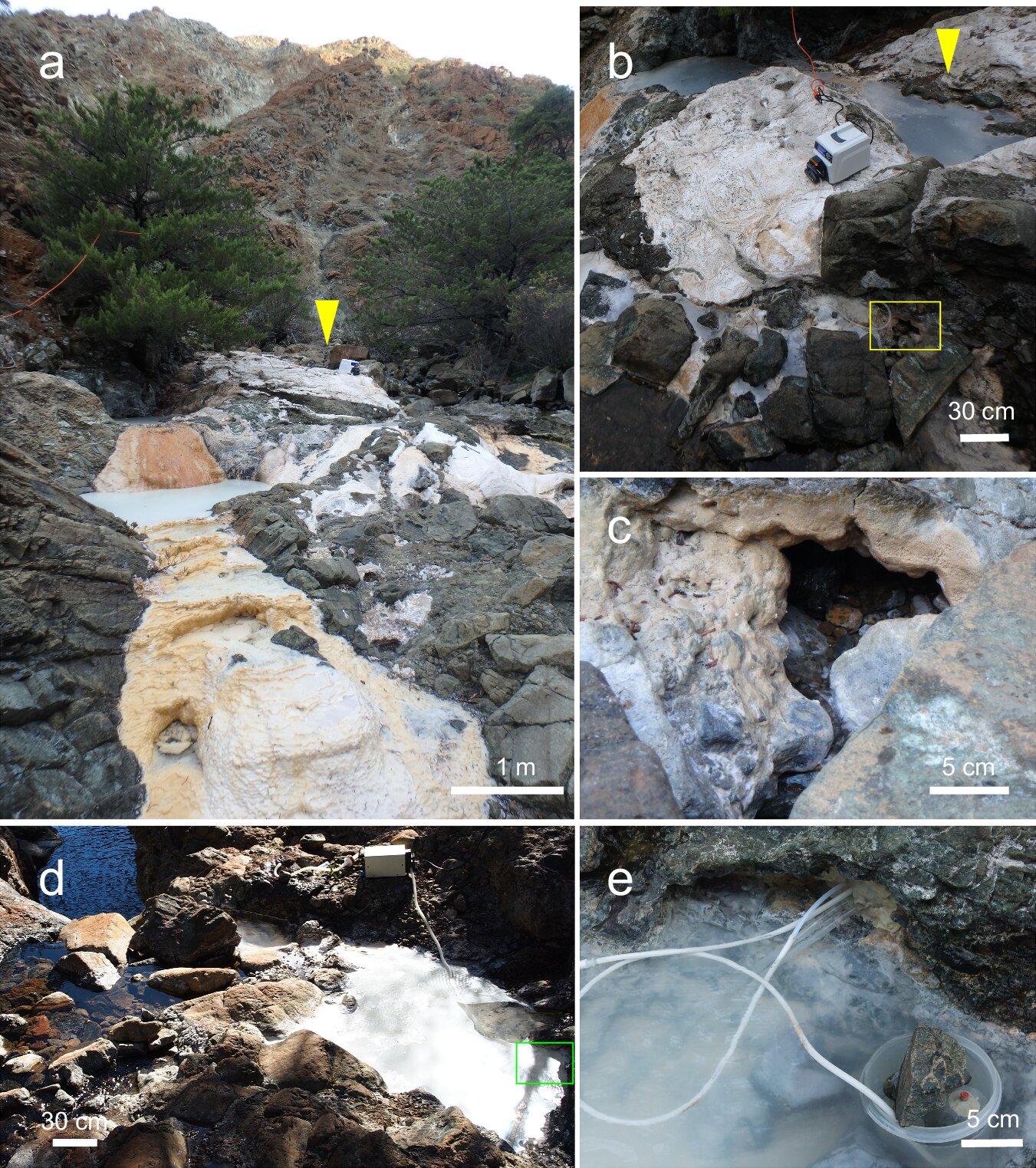 phys.org
phys.org
RIKEN scientists looking for clues to the origins of life on Earth have discovered a new microbe that may shed light on how organisms first developed on Earth, the search for life elsewhere in the universe and how to improve microbial factories. Their research, conducted in the rugged, deep-water-fed springs of northern California, uncovered a microorganism that converts carbon dioxide into other chemicals. This process not only generates energy, but employs a previously unknown metabolic pathway, suggesting novel methods of carbon fixation that may mimic the earliest forms of energy metabolism on our planet.
 www.theguardian.com
www.theguardian.com
A well-preserved thylacine head was a gruesome sight – but it also contained RNA molecules crucial to reconstructing the extinct animal’s genome Breakthroughs sometimes turn up in unexpected places. The researchers working on the international push to bring back the thylacine say they found theirs in a long-ignored bucket in the back of a cupboard at a Melbourne museum. It contained an astonishingly well-preserved head of the extinct marsupial, also known as the Tasmanian tiger.
 phys.org
phys.org
The team found a long-buried tomb with the remains of 12 ancient skeletons beneath the iconic building where more than a million visitors a year come to visit. The Treasury sits as the center of an entire city carved by hand into the walls of a desert canyon by the people of the Nabatean Kingdom, 2,000 years ago. The team received permission to conduct a remote sensing scan and then dig beneath the Treasury. The non-invasive remote sensing was conducted with electromagnetic conductivity and ground penetrating radar. When the survey found probable underground chambers in and around the Treasury, an excavation plan was designed and carried out by a team from the Department of Antiquities and ACOR. This revealed the presence of a tomb, with burials still in their ancient locations. Professor Bates said, "The discovery is of international significance, as very few complete burials from the early Nabataeans have ever been recovered from Petra before. The burials, their goods, and the human remains can all be expected to help fill the gaps in our knowledge of how Petra came to be and who the Nabataeans were." "It's fantastic that we now have the pottery, ecofacts and sediments to date when the Treasury was constructed. Previously we've worked on assumptions and conjectures—to have a definitive date will be a monumental achievement for us all." One skeleton in the chamber was found clutching a ceramic vessel.
 www.nature.com
www.nature.com
It is well known that dogs are capable of following human verbal instructions. However, very little is known about the equivalent ability in cats. In this study, we used a switched stimuli task to examine whether cats rapidly form picture-word association, which is a fundamental ability for word learning. These results demonstrate that cats can rapidly form picture-word association.
 edition.cnn.com
edition.cnn.com
Work on the Great Wall began more than 2,500 years ago, its origins dating back to China’s Spring and Autumn Period of around 770 BCE to 476 BCE. Various sections were added in subsequent eras as competing dynasties and factions sought to exert their control. Work eventually stopped in the 17th century. Though not a single, unbroken structure, the wall spans over 21,000 kilometers, winding through 15 provinces, 97 prefectures and 404 counties.
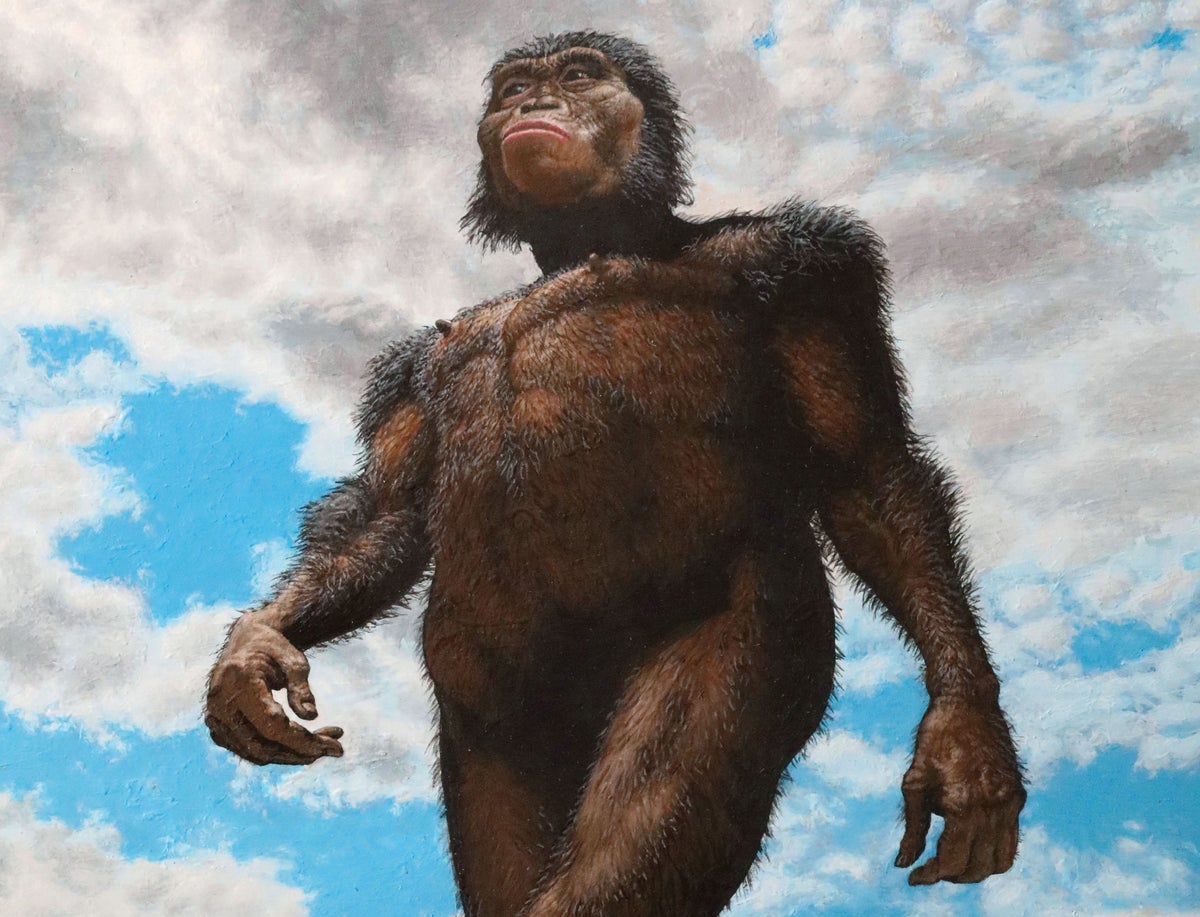 www.scientificamerican.com
www.scientificamerican.com
Fossil Human Ancestor ‘Lucy’ Remains Pivotal 50 Years after Discovery Fifty years ago one of us (Johanson) made just such a discovery on an expedition to the Afar region of Ethiopia. On November 24, 1974, Johanson was out prospecting for fossils of human ancestors with his graduate student Tom Gray, eyes trained on the ground, when he spotted a piece of elbow with humanlike anatomy. Glancing upslope, he saw additional fragments of bone glinting in the noonday sun. In the weeks, months and years that followed, as the expedition team worked to recover and analyze all the ancient bones eroding out of that hillside, it became clear that Johanson had found a remarkable partial skeleton of a human ancestor who had lived some 3.2 million years ago. She was assigned to a new species, Australopithecus afarensis, and given the reference number A.L.288-1, which stands for “Afar locality 288,” the spot where she, the first hominin fossil, was found. But to most people, she is known simply by her nickname, Lucy.
 www.sciencenordic.com
www.sciencenordic.com
OP: @kim_harding@mastodon.scot Ancient DNA analyses suggest that prehistoric Europeans looked different from modern Europeans today, but some people find that hard to accept. How do we know what Lola looked like? Because the genes involved in pigmentation have been well studied, it is possible to predict the skin, eye and hair colour of an individual based on their genotype with a certain probability, something that is routinely done in forensic investigations. In practice, this works by checking which variants of a gene are present and what phenotype they are associated with. The more genes we can include in this analysis, the more confident we can be that our prediction is correct. In Lola’s case, we studied 41 gene variants across her genome that have been associated with skin, hair and eye colour in humans, and concluded that she likely had this unusual (at least for today) combination of dark skin, dark hair, and blue eyes.
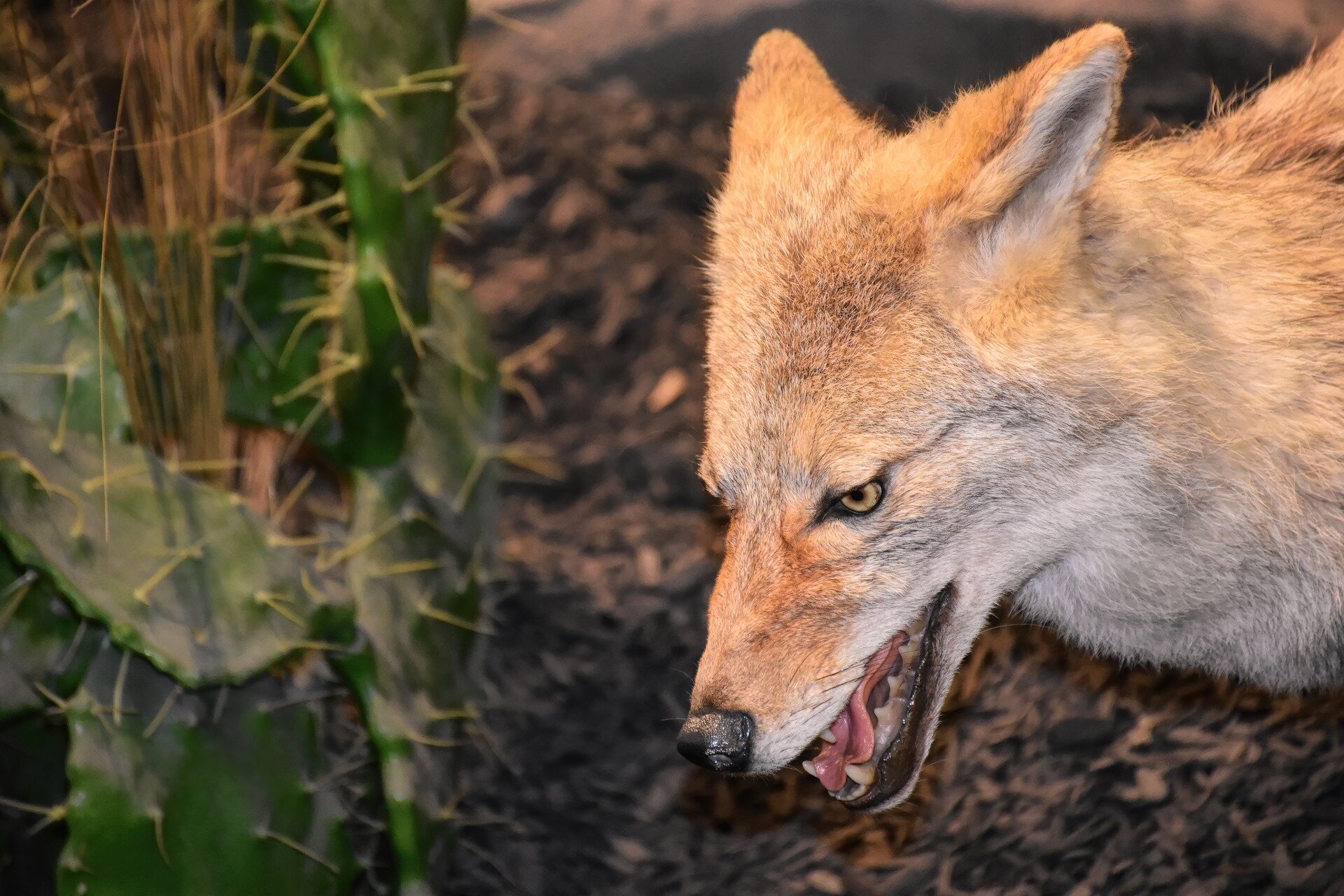 phys.org
phys.org
With its gray, scaley skin, protruding dorsal spines, menacing fangs and proclivity for small livestock, the mythical chupacabra has stoked both curiosity and fear across portions of the Americas for decades. If you consider the most common descriptions of the chupacabra, from its physical appearance to its behavior, you're likely dealing with a coyote that is in the late stages of mange. Mange is a debilitating disease that can infect a wide range of fur-bearing mammals,depending on the animal's ability to overcome the symptoms of mange, the condition can become chronic, leading to behavioral changes and even death. On canids, the last place they lose fur is right between the shoulder blades in an area that we call the ruff, this fits descriptions of chupacabras having spikes or a ridge along their backs. The vampire-like punctures often reported on victims of the chupacabra also correspond with the coyote's standard predation method of strangulation through multiple bites to their prey's neck. Reports of chupacabras fully draining an animal of blood may also be explained by how rapidly blood will settle and coagulate within the dead animal, making it appear as though it has been drained.
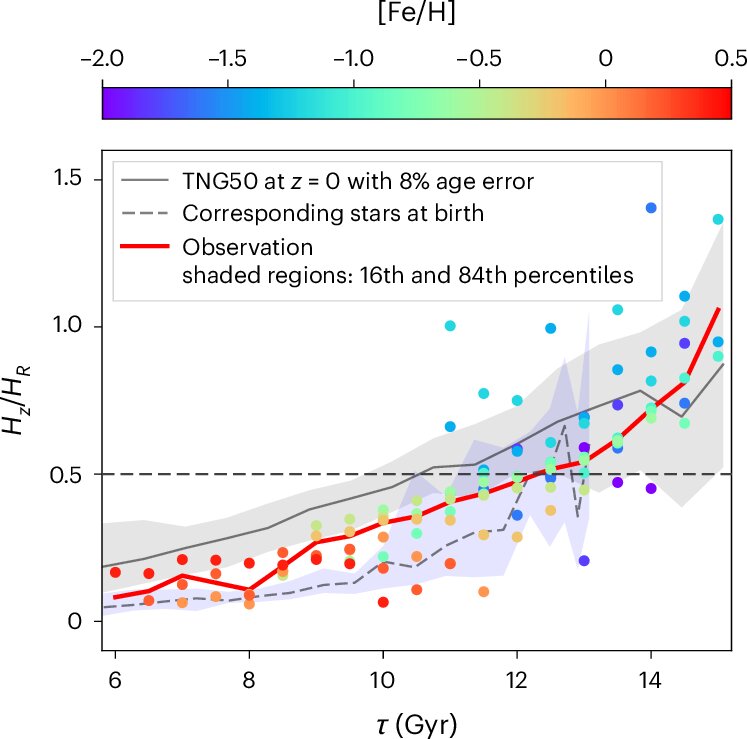 phys.org
phys.org
Prior research has shown that the Milky Way started its life as a single entity. Over time, it has drawn in multiple other galaxies, making it much bigger—remnants of such galaxies have been found throughout the Milky Way. Such additions have made it difficult for astronomers to determine the original structure of the Milky Way. In this new effort, the research team claims that by dating a large number of stars in different parts of the galaxy, they were able to narrow their focus to a particular group that they believe represents the original galaxy disk. The team named the disk PanGu. Source: **The formation and survival of the Milky Way’s oldest stellar disk** [https://www.nature.com/articles/s41550-024-02382-w](https://www.nature.com/articles/s41550-024-02382-w)
**Highlights** • One of the oldest dinosauromorphs is described. • It is the earliest “silesaurid” with a sacrum composed of three vertebrae. • The oldest episode of sympatry among “silesaurids” in South America is reported. *Conclusions* Gondwanax paraisensis was a bird-line archosaur that shared affinities with typical “silesaurids”. It comes from the oldest dinosauromorph-bearing beds of South America (i.e., Ladinian-Carnian boundary), comprising one of the oldest “silesaurids” worldwide (Fig. 7). The material preserves elements that are scarce among “silesaurids”, such as the sacrum. This structure is particularly interesting for Gondwanax paraisensis, which is composed of three vertebrae.
 www.nature.com
www.nature.com
On Earth, solar radiation can transmit down to multiple metres within ice, depending on its optical properties. Organisms within ice can harness energy from photosynthetically active radiation while being protected from damaging ultraviolet radiation. On Mars, the lack of an effective ozone shield allows ~30% more damaging ultraviolet radiation to reach the surface in comparison with Earth. However, our radiative transfer modelling shows that despite the intense surface ultraviolet radiation, there are radiatively habitable zones within exposed mid-latitude ice on Mars, at depths ranging from a few centimetres for ice with 0.01–0.1% dust, and up to a few metres within cleaner ice. Numerical models predict that dense dusty snow in the martian mid-latitudes can melt below the surface at present. Thus, if small amounts of liquid water are available at these depths, mid-latitude ice exposures could represent the most easily accessible locations to search for extant life on Mars.
Fleets of dozens of mysterious UFO drones are surveilling America’s most sensitive military sites, and the Pentagon admits it can’t do much to stop the aerial intruders, according to a new report. Drones of unknown origin have been spotted flying over military bases in Virginia and Nevada over the past year, including the secret base for the Navy’s elite SEAL Team Six commando unit and Naval Station Norfolk, the world’s largest naval port, the Wall Street Journal reports. Federal laws, however, prohibit the military from shooting down the drones over the potential risks to troops and civilians.
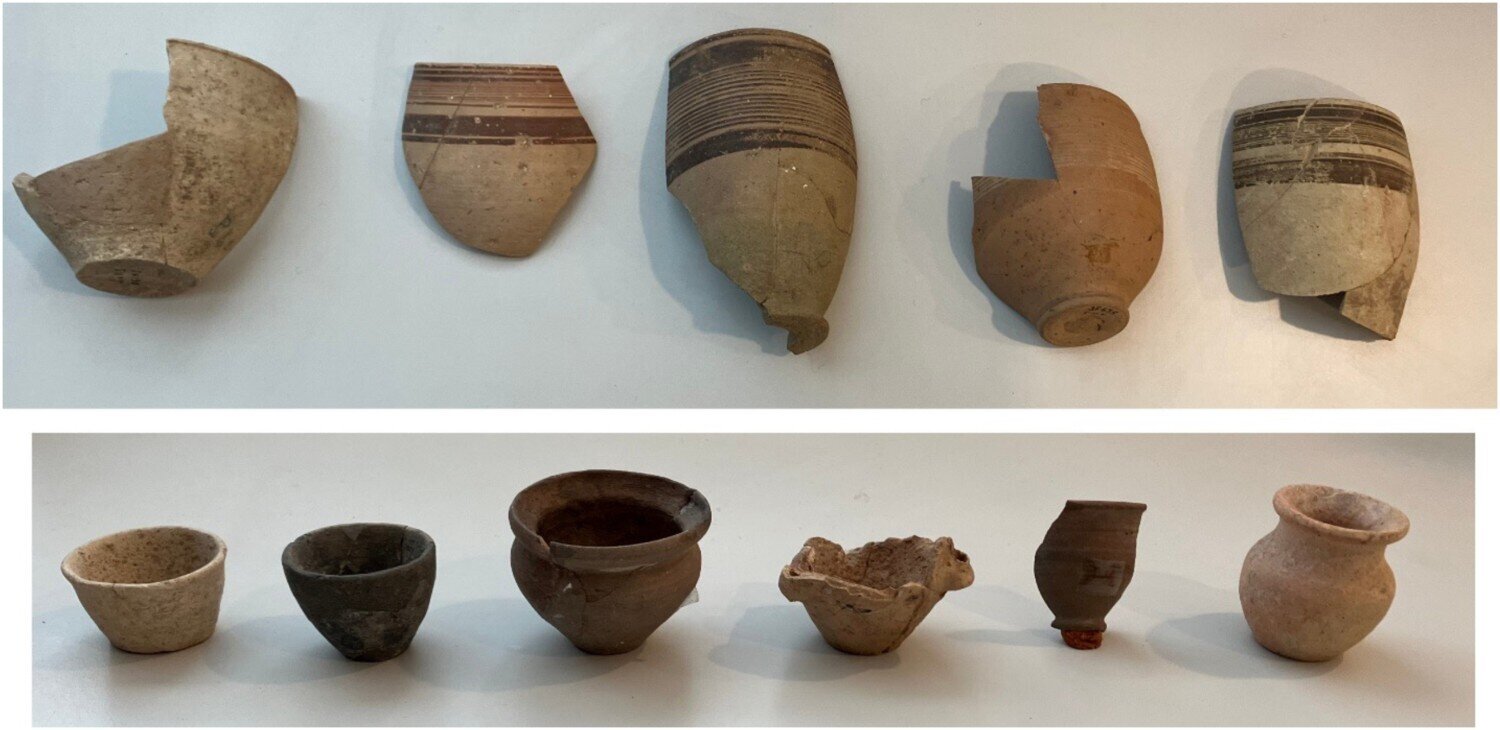 phys.org
phys.org
Archaeologists have analyzed 450 pottery vessels made in Tel Hama, a town at the edge of the Ebla Kingdom, one of the most important Syrian kingdoms in the Early Bronze Age (about 4,500 years ago). They found that two-thirds of the pottery vessels were made by children—starting at the ages of 7 and 8. Along with children's use for the kingdom's needs, they also found evidence of the children's independent creations outside the industrial framework, illustrating the spark of childhood even in early urban societies.
 newspaceeconomy.ca
newspaceeconomy.ca
**The Promising Signal: BLC-1** At the center of this potential discovery is a signal known as BLC-1 (Breakthrough Listen Candidate 1). This radio wave signal was first detected in April 2019 by the Parkes Telescope in Australia. What makes BLC-1 particularly intriguing are several key characteristics: - It originates from a single point source - The signal is in a narrow frequency band - It exhibits a Doppler shift, suggesting it comes from a rotating planet These features make BLC-1 stand out from natural phenomena and align with hypothesized characteristics of artificial signals from an extraterrestrial civilization. **The Race to Confirm** Two main groups are working to verify and potentially announce this groundbreaking discovery: - Breakthrough Listen: This privately funded research program, based in Oxford, has been analyzing the BLC-1 signal. They are meticulously gathering additional data to support their findings. - Chinese FAST Program: China’s Five-hundred-meter Aperture Spherical Telescope (FAST) team is also investigating the signal. As the world’s largest telescope, FAST provides them with a powerful tool for this research. Both teams are exercising extreme caution before making any announcements, understanding the monumental implications of such a discovery. https://newspaceeconomy.ca/2024/10/14/potential-discovery-of-extraterrestrial-intelligence-scientists-race-to-confirm-findings/?utm_source=mastodon&utm_medium=wptb&utm_campaign=firstpost&=1
This paper discusses transformations in human behavior between the Iron Age and the Roman times in the tribal territory of the Treveri, later civitas Treverorum, located between the Rhine and the Ardennes. This aspect has been examined from two perspectives: first, from an anthropological point of view vis-a-vis the historical inhabitants, and second, from an archaeozoological perspective regarding domestic animals. Due to small sample sizes and/or difficulty in dating, both regarding humans and domestic animals, transformations in living conditions and animal-keeping could mostly be outlined only for the La Tène and Roman times. Only the Celtic-Roman cemetery of Wederath-Belginum with continued use from middle La Tène to late antiquity offers a more complex insight into human mortality and animal offerings. People lived longer in the Roman times but had more pathologies compared with the previous La Tène period. Body height remained similar in the La Tène and Roman times. However, differences existed within specific human groups (for example, warriors and craftsmen), compared to the normal population. Sex differences in mortality persisted from La Tène to Roman times. The faunal composition in the burials, settlements, and sanctuaries also shows changes. Since the middle La Tène period, chickens have been present. The first oysters can be found in Augustean times, whereas exotic birds such as crested fowls and peacocks are found only in later Roman times and are quite rare. A new direction in animal-keeping is demonstrated via an increasing logarithmic size index (LSI) in cattle and sheep. The multivariate methods applied in this study offer further insights into the domain and can serve as helpful tools for osteoarchaeological data analysis.
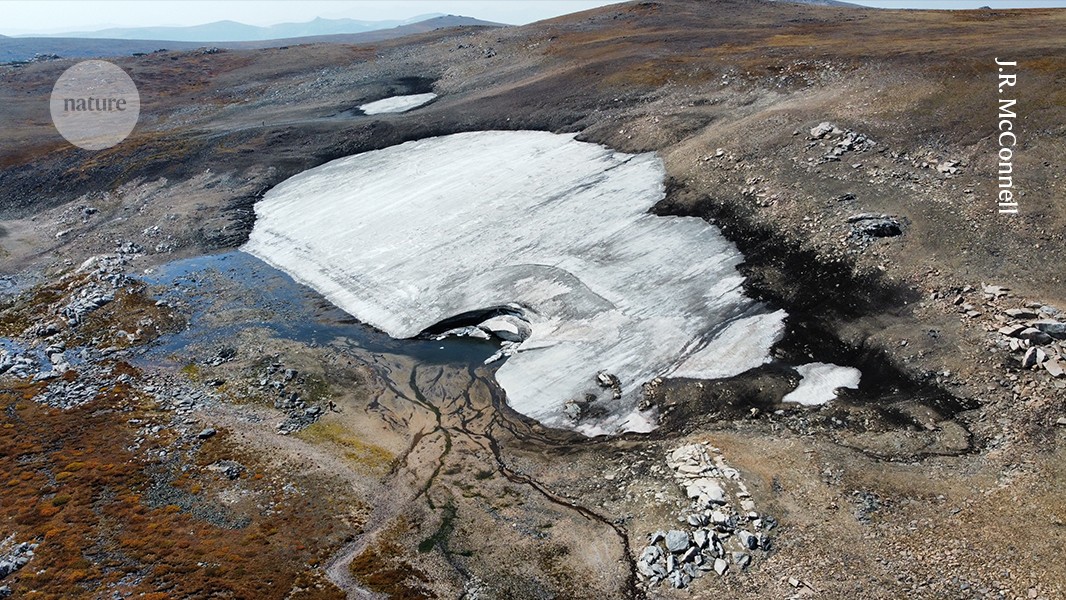 www.nature.com
www.nature.com
Many of the ancient artefacts exposed by melting ice patches around the world relate to large-animal hunting. In summer, reindeer (caribou), bison, mountain sheep and other large animals would congregate on ice patches to avoid heat and biting insects, and autumn melt would support late-season grass growth, making the patches into high-elevation oases. Hunters followed the herds, as shown by lost and discarded hunting tools, along with everyday items, such as shoes, clothing and baskets, that accumulated and were preserved in the ice patches.
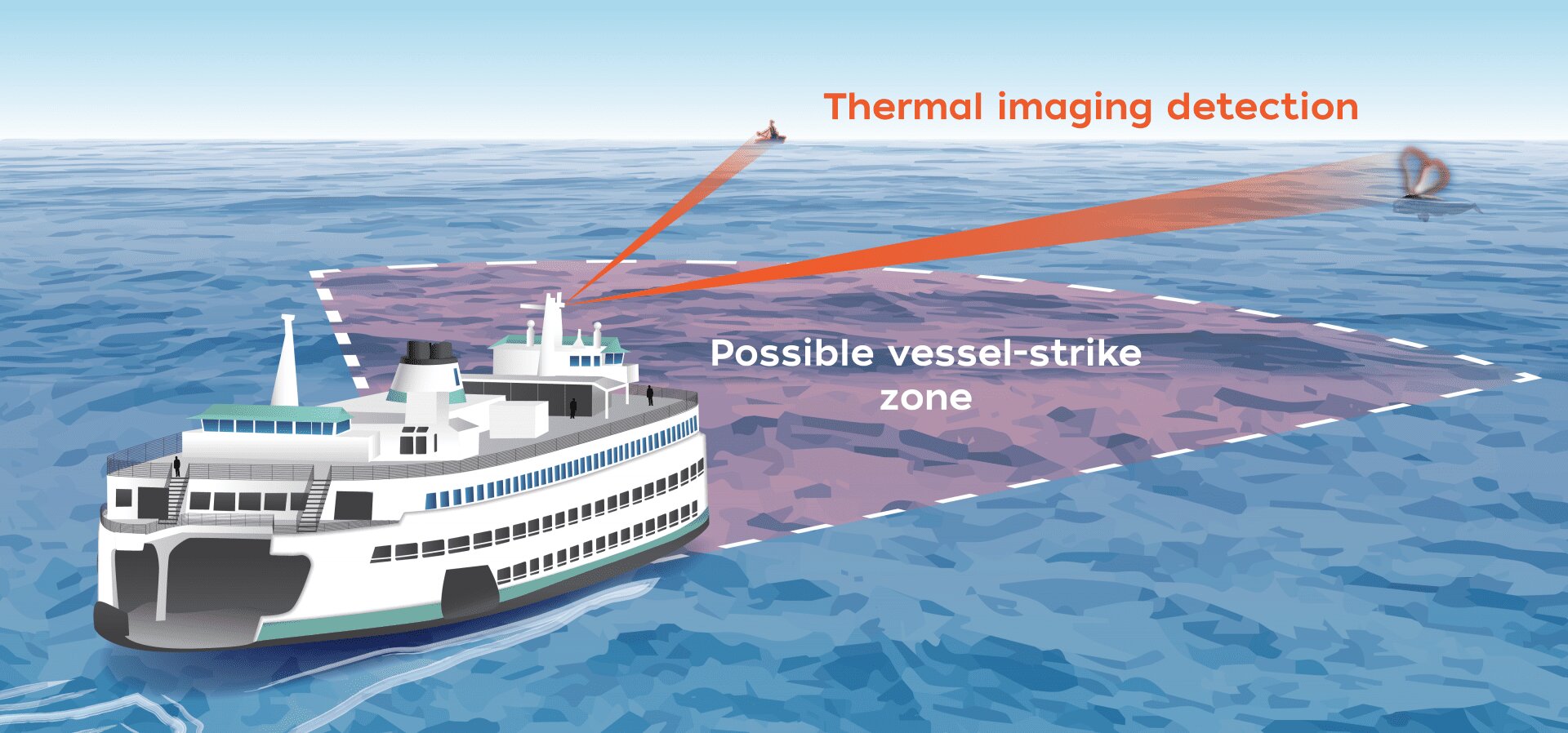 phys.org
phys.org
Vessel strikes and entanglement are some of the leading causes of injury and death to marine animals such as whales. Increasingly urbanized waterways, warming oceans, changes in prey distribution—and in some cases, increasing species populations—make for a crowded and dynamic ocean environment. Recognizing the need for additional technology to advance an existing suite of protections, Woods Hole Oceanographic Institution (WHOI) researchers have developed a marine mammal detection system for large commercial vehicles. This technology uses thermal imaging to detect a whale's body or spout and provides real-time information on their distance and bearing from a vessel. The goal is to provide ship captains with enough time for vessels to be able to change course or slow down. This human-in-the-loop verification ensures that the captains never receive false alerts, thus avoiding alert fatigue and building trust and confidence in the whale detection technology. Unlike human observation from planes and boats, the systems don't require ambient light, so the cameras can spot whales at all hours, further improving collision avoidance.
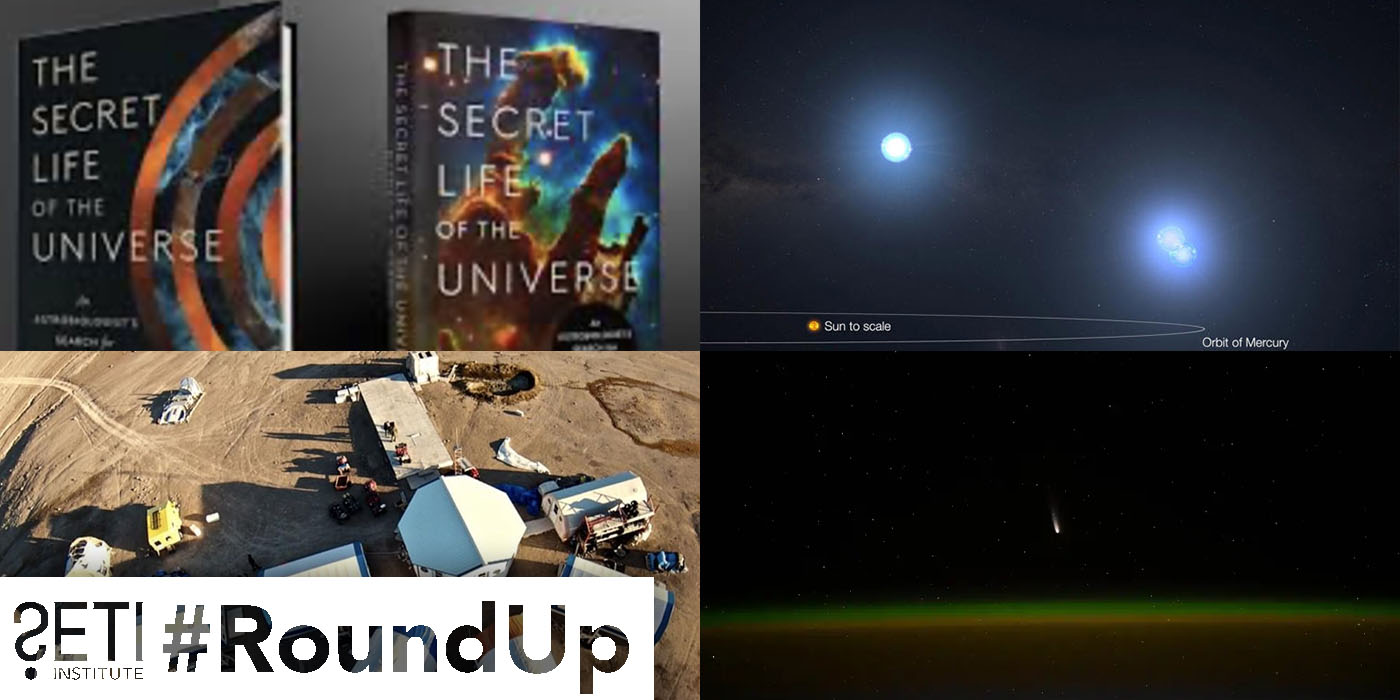 www.seti.org
www.seti.org
The SETI Institute frequently appears in news stories due to its essential contributions to space science and exploration. From groundbreaking discoveries to inspiring initiatives, the world of space exploration continues to capture our imaginations. In this month’s roundup, discover how astronomers have uncovered a unique triple star system with the shortest known outer orbital period, and updates on the Comet Tsuchinshan-Atlas comet that has been traveling for over 81,000 years, and more!
 theconversation.com
theconversation.com
Humans seem to have been adapted to the last ice age in similar ways to wolves and bears, according to our recent study, challenging longstanding theories about how and where our ancestors lived during this glacial period. Previous studies have supported the view of most archaeologists that modern humans retreated into southern Europe during the height of the last ice age and expanded during the later increase in global temperatures. But our study is the first to use genetic data to show that at least some humans stayed in central Europe, unlike many other animals and despite our species having evolved in the much warmer climate of Africa.
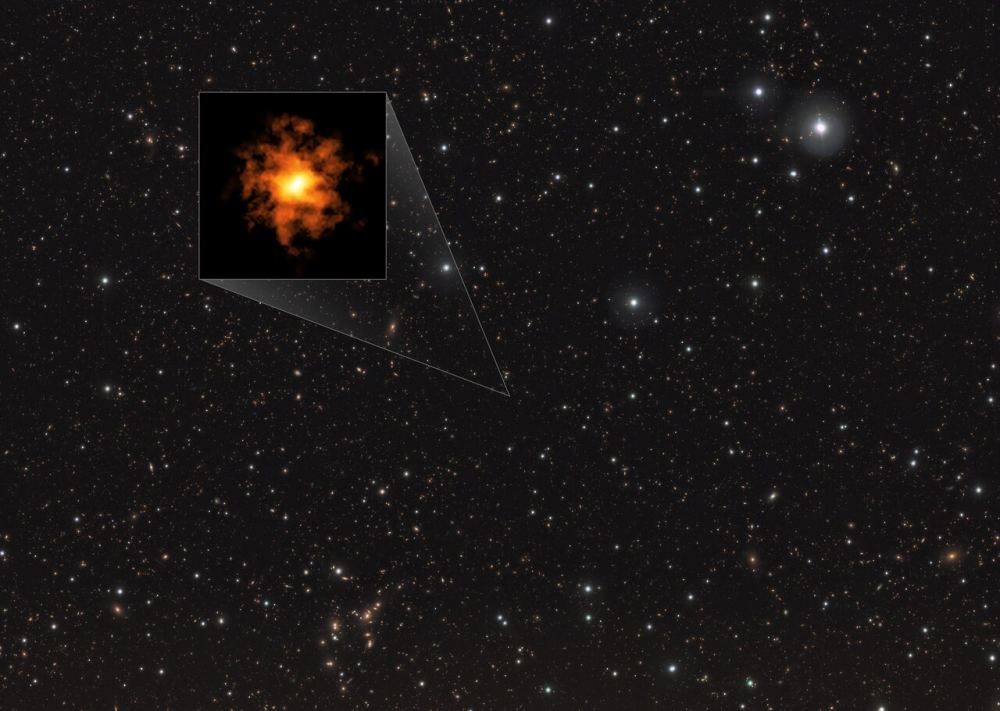 www.universetoday.com
www.universetoday.com
Astronomers have found a galaxy that looks surprisingly similar to the Milky Way. What's amazing is that the galaxy is seen at a time when the Universe was only 700 million years old, before large and ordered spiral galaxies were expected to be common. Dubbed REBELS-25, the galaxy was studied by the Atacama Large Millimeter/Submillimeter Array (ALMA). The data even hint at other evolved features like a central elongated bar and spiral arms.
The evolution of the human hand is a topic of great interest in paleoanthropology. As the hand can be involved in a vast array of activities, knowledge regarding how it was used by early hominins can yield crucial information on the factors driving biocultural evolution. Our results highlight the importance of certain muscles of the first and fifth digits for humanlike hand use. In humans, these muscles are required for variable in-hand manipulation and are activated during stone-tool production. The entheses of A. sediba suggest muscle activation patterns consistent with a similar suite of habitual manual activities as in later Homo. In contrast, A. africanus and A. afarensis display a mosaic entheseal pattern that combines indications of both humanlike and apelike manipulation. Overall, these findings provide new evidence that some australopith species were already habitually engaging in humanlike manipulation, even if their manual dexterity was likely not as high as in later Homo. The frequent activation of muscles needed to perform characteristic humanlike grasping and manipulation in these early hominins lends support to the notion that humanlike hand use emerged prior to—and likely influenced—the evolutionary adaptations for higher manual dexterity in later hominins.
 arstechnica.com
arstechnica.com
What if there was a way to sneak malicious instructions into Claude, Copilot, or other top-name AI chatbots and get confidential data out of them by using characters large language models can recognize and their human users can’t? As it turns out, there was—and in some cases still is. The invisible characters, the result of a quirk in the Unicode text encoding standard, create an ideal covert channel that can make it easier for attackers to conceal malicious payloads fed into an LLM. The hidden text can similarly obfuscate the exfiltration of passwords, financial information, or other secrets out of the same AI-powered bots. Because the hidden text can be combined with normal text, users can unwittingly paste it into prompts. The secret content can also be appended to visible text in chatbot output. The result is a steganographic framework built into the most widely used text encoding channel.
 phys.org
phys.org
In the shadow of South Australia's largest mountain range beneath the outback soil lies a fossil record that reveals a rich history of life on Earth. Fossils found at Nilpena Ediacara National Park preserve a pivotal moment in the history of evolution: the crucial period during which single-celled organisms began to evolve into the planet's first complex, visible animals. A new discovery in the area by Scott Evans, assistant professor of geology in the Florida State University Department of Earth, Ocean and Atmospheric Science, and a multi-institution team of paleontologists has identified an early marine animal from around 555 million years ago. The discovery helps answer how life evolved on Earth. Quaestio simpsonorum is the first animal to show a definitive left-right asymmetry, an important sign of evolutionary development. The team's findings appear in Evolution & Development.
 www.wdio.com
www.wdio.com
Paranormal researcher Brian J. Cano has been investigating ghosts for 22 years now, visiting locations all across the globe. Brian started out as a skeptic but now he says he’s a skeptical believer, which means he thinks there’s something out there but is skeptical on how it’s reported. Saying not everything that happens during the night is paranormal activity. One of those stories talks about Brian’s demonic experience with the circle of fire at the Grand Midway Hotel. Brian says, “When I say off the chart, I mean literally you go down the list: Chris was getting touched, I was hearing things audibly, Lisa Ann was communing directly with spirits… it was the most poignant encounter I ever had.”
Former UAP Task Force insider tells Ross Coulthart: We are not alone
 www.nature.com
www.nature.com
Over the next few months, my colleagues and I started to explore what we could grow in the material. We found that tomatoes, peas and carrots all took to the soil and grew well. But could these plants realistically survive on Mars? The planet does have water, but most of it is frozen at its poles or buried deep underground. So for plants to live, water would need to be pumped up to the surface. Mars has almost no atmosphere and no magnetic field, so plants would have to be housed in colonies, with greenhouse-like structures to protect them. In these, an internal ecosystem with a controlled atmosphere could help the plants to retrieve oxygen through hydrolysis.
Alien Signal - Not if but When Update from Simon Holland
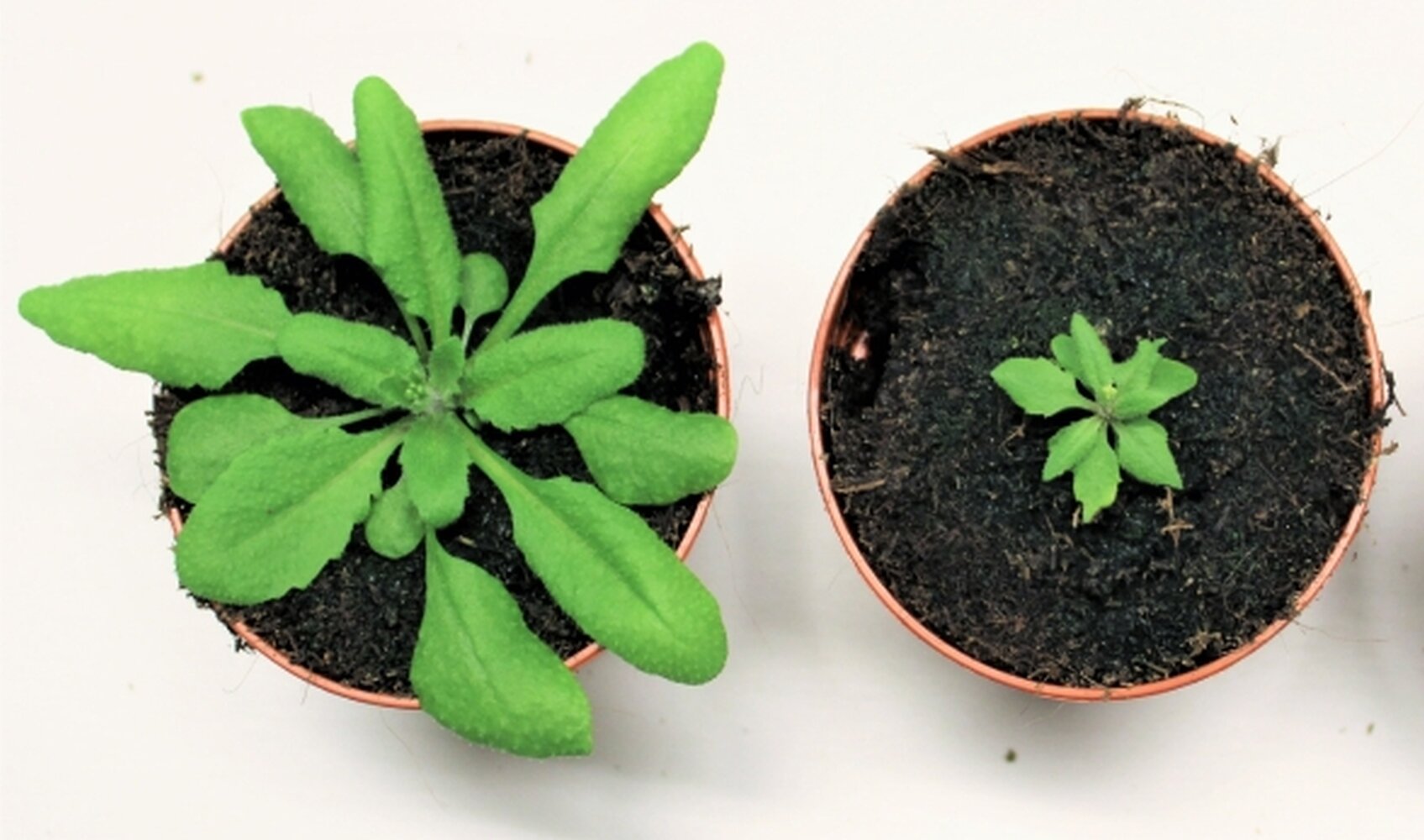 phys.org
phys.org
Plants have a sophisticated mechanism for monitoring the production of new proteins. The U1 snRNP complex ensures that the protein blueprints are fully completed. This is important because cells tend to halt the process prematurely. This type of quality control, so-called telescripting, was previously known to exist only in animal cells.
 www.scientificamerican.com
www.scientificamerican.com
Scientists had previously observed sleeping birds making movements that resembled lip-syncing. In earlier work, Mindlin and his colleagues implanted electrodes in two Zebra Finches; for a recent study in Chaos, they did the same for two Great Kiskadees. This let them record and compare neuron and muscle activity in the sleeping birds. When awake, Zebra Finches sing a well-regulated line of staccato notes. But their sleeping song movements are fragmented, disjointed and sporadic—“rather like a dream,” Mindlin says. A dozing finch seems to silently practice a few “notes” and then add another, producing a pattern of muscle activity that reminds Mindlin “of learning a musical instrument.”
 www.wionews.com
www.wionews.com
In a shocking claim, a retired senior Pentagon official said that a UFO "mother ships" had been "releasing swarms of smaller craft" which has added more mystery to the intrusions over multiple US military bases. As per the report, last December, multiple noisy and small UFOs were spotted at dusk for nearly 17 nights "moving at rapid speeds" and displaying "flashing red, green, and white lights" which penetrated the highly restricted airspace which was above Langley Air Force Base in Virginia.
Alien Tech Signature found? - Prof Simon